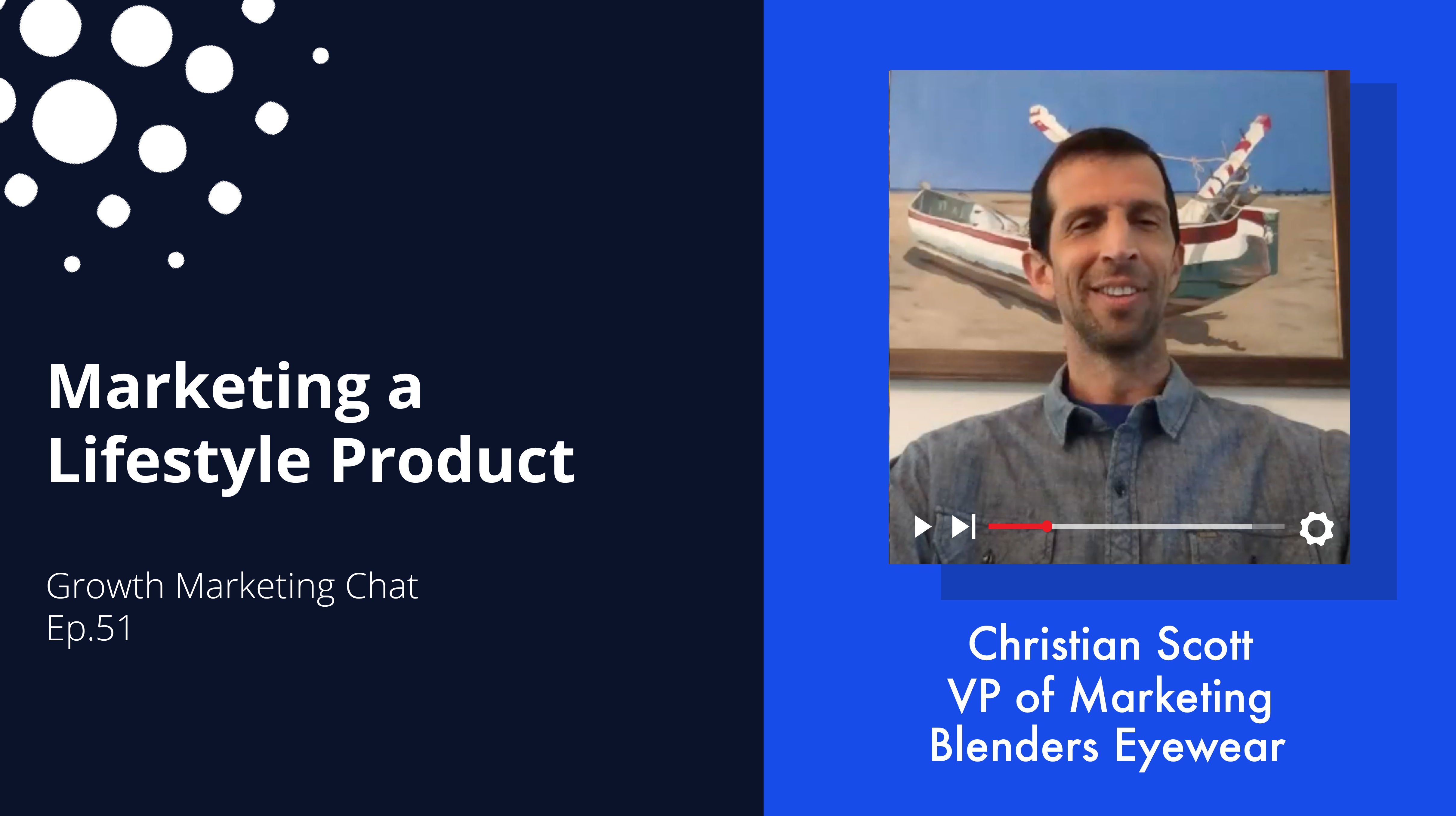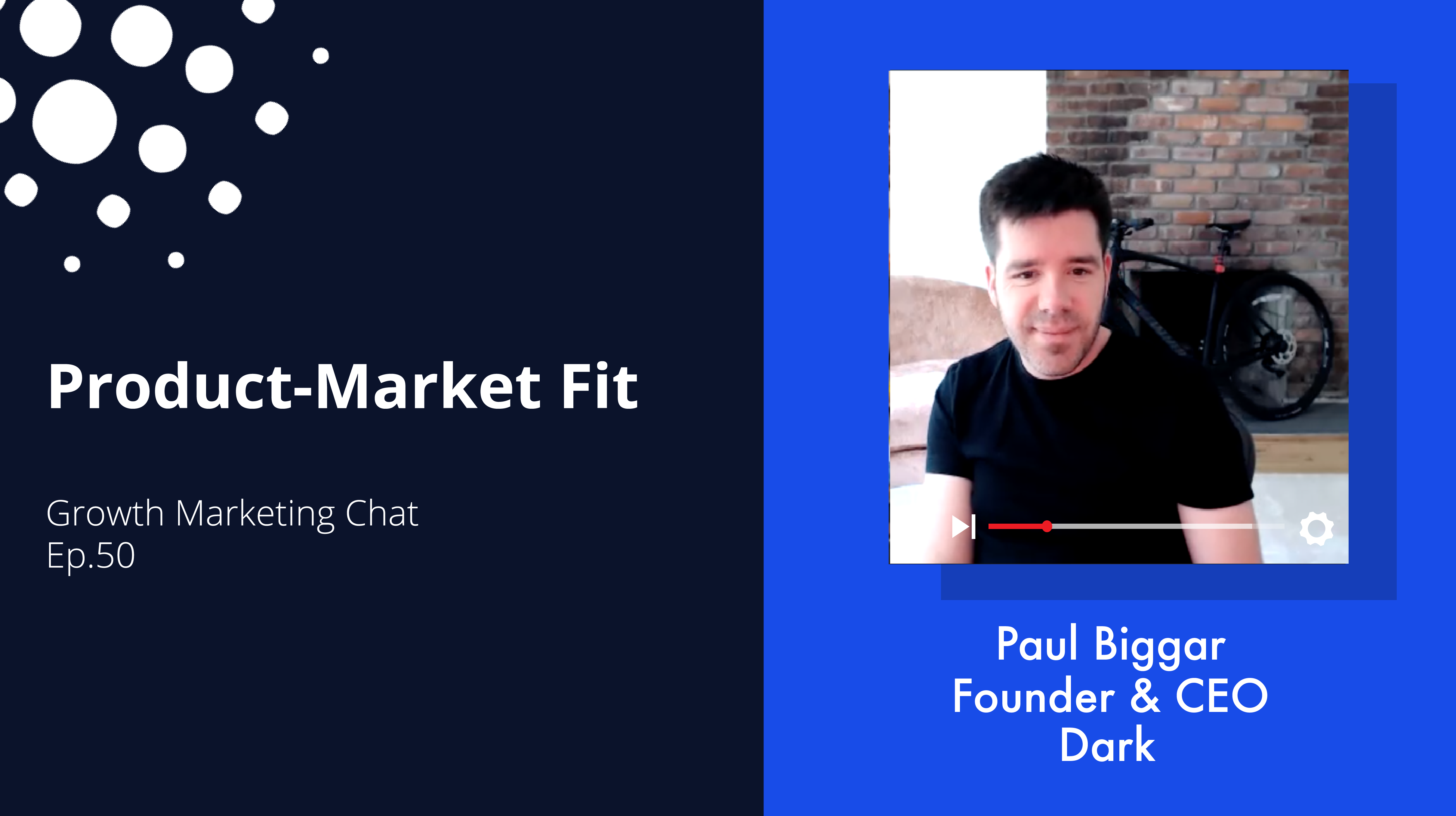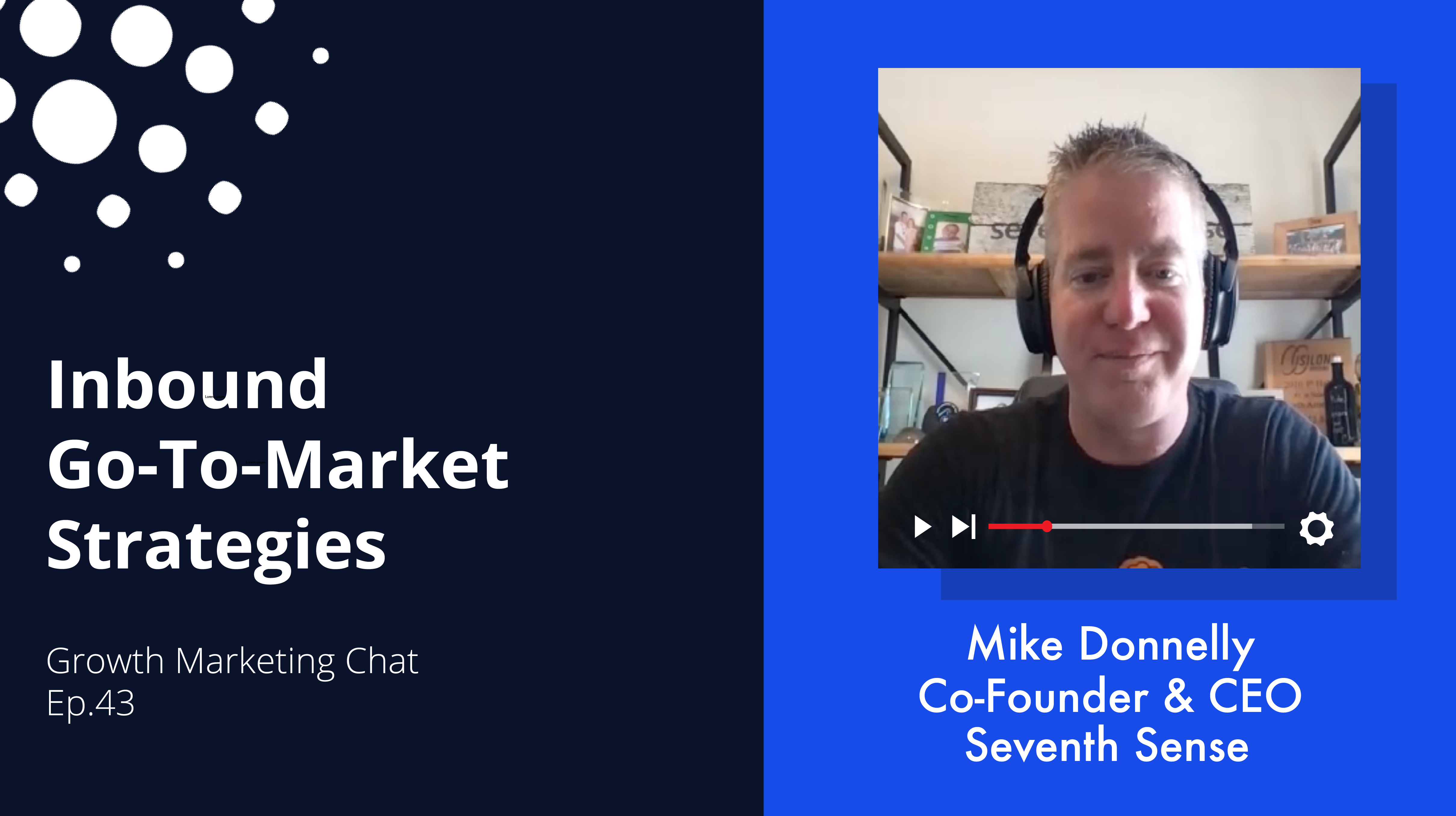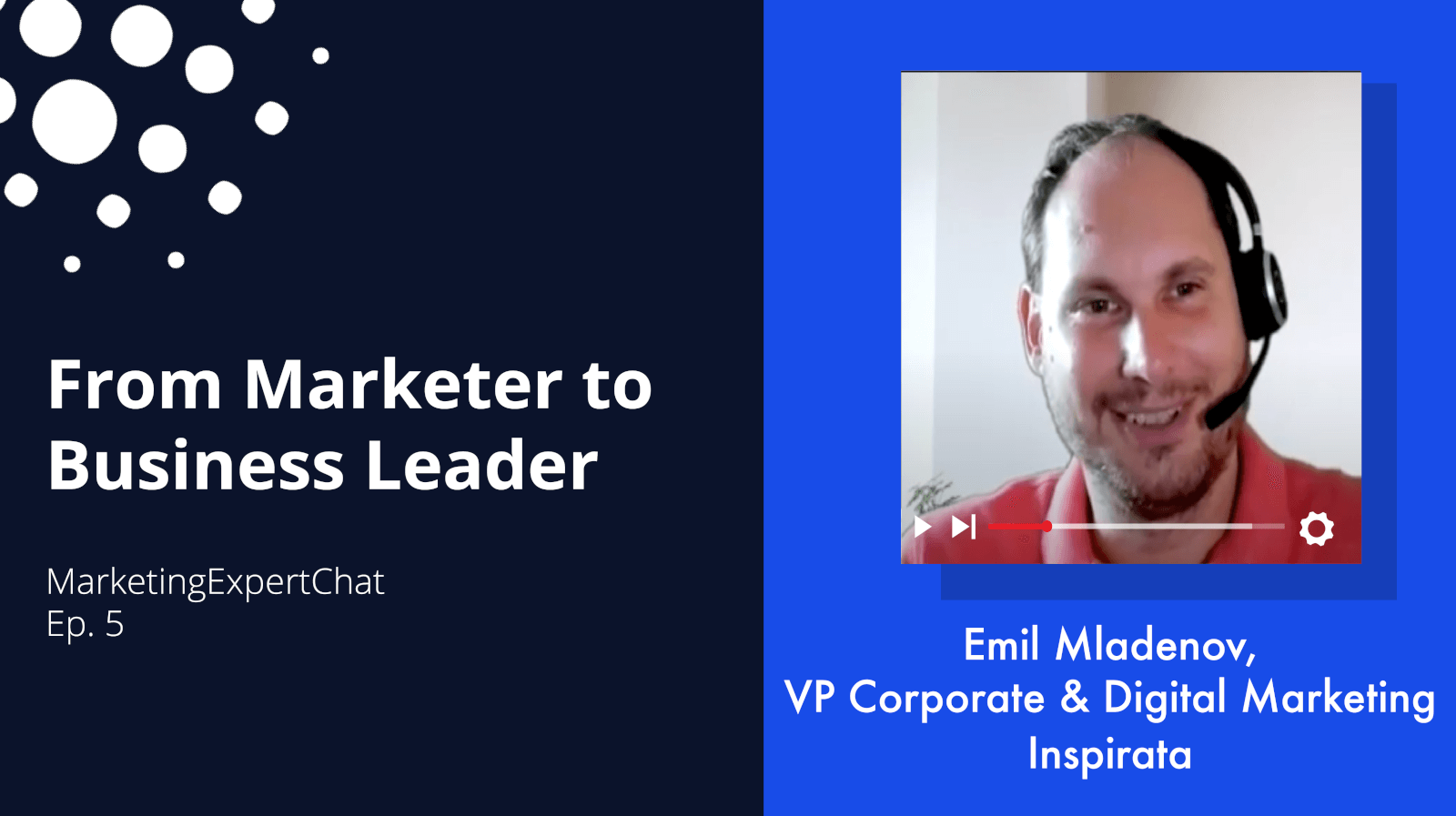True Innovation.
What does it mean?
In the words of Tammy Beil, Director of Marketing for ZeroEyes, it’s creating something that people can’t imagine living without.
So, when you create such a groundbreaking product or service, how do you market it effectively? How do you communicate such complexity of a product in a clear, consistent way in your content marketing?
Go-To-Market Strategy for Innovative Product Launches
In this episode of our Marketing Expert Chat series, Tammy does a brilliant job of breaking down how to launch an innovative product or service and build a successful go-to-market strategy.
She covers:
- The role of overall brand awareness in launching an innovative product
- The 5 groups that make up the Diffusion of Innovation model
- Multi-faceted approaches to educating target audiences on the solution your innovative product provides
- And so much more!
Even if your company doesn’t offer innovative solutions, there’s still so much to learn from Tammy’s advice! Tune in now for a deeper understanding of how to approach a Go-To-Market strategy for an innovative product or service.
Video Transcript:
CAROLINE: Today I’m here with Tammy Beil. Tammy has an incredibly rich marketing background. She started her career in sales before transitioning to marketing. She led marketing divisions for Fortune 50 companies, and then she moved into B2B marketing for startups. And today she’s the Director of Marketing for ZeroEyes, an AI for firearm detection company. Tammy, thank you so much for being with me today.
TAMMY: Well, thank you for having me today. It’s a pleasure.
CAROLINE: So today we’re gonna talk about launching innovating products. And launching innovative products comes with a lot of challenges, because your audience might not know about your company, and your product, but they also might not know that they need the product to begin with, or that something like this exists. So, it creates a lot of challenges because you have to obviously educate your audience. And so, my question for you today is a big one. What are the keys to a successful go-to-market strategy for a new innovative product?
TAMMY: Well, it is an important question and I think it really has a two-fold mission to it when you really look at it, and you’ve really hit upon two things actually as in asking your question. And the first part of it is, you actually have to create your own company awareness, right? Your own brand awareness.
So, in most cases, that in and of itself can be a big challenge for startups. But when you’re talking about an innovative product or service, you also have to create that need, and create awareness, of what you are doing, and the impact that it can have. And I think most importantly, it comes back to the problem, or the issue that you are trying to solve, right. Any solution or any product only lasts in the marketplace if you are truly adding value, and you’re solving a problem someone has, or you’re selling an issue. So, it’s a two-fold mission in your company getting out there and having the brand awareness, as well as educating, and you’ve talked about educating the public, whether it be the public, or in this case what we’re offering is a B2B solution.
So, taking a look at it and what we are doing is first of all, of course, taking that educational approach. And one of the challenges to an educational approach is, it also takes time. Even the greatest marketing campaigns, and marketing programs, you have to be in it for the longevity of it. I mean, this is not a 90-day sprint. This is a marathon, okay. I like to use a lot of athletic analogies. But there’s no doubt that this is a marathon and you have to know that and be aware of that from the get-go. So, when you go with the educational approach, it does take time. And what you’re really looking at when you talk about true innovation, and educating the market about what’s out there, is truly what we call the diffusion of innovation. And it’s very much a bell curve. And the bell curve really is, we’ve really had to appeal first of all to those innovators. There’s actually five categories within that bell curve, when you’re talking about the diffusion of innovation, and that is your innovators, which really only make up about 3% of the population out there.
And then you have your early adopters. Those people that are like, yes, I’m aware of it, man, I want to be the first one in, right. Those are only about 15%. And then you have your biggest segments are really your majority adopters. The ones that will come on that are in the majority but they’re early on, but they do wanna know that, yes, this is something that’s been tested out. And then you have your late majority, and of course your laggers, right. People that are gonna come only after it’s like, okay, I can’t get this version of software anymore so I’ll have to buy a new widget, right? Okay. So that’s really what you’re looking at.
But when you’re coming out with something, you’re really looking at that first segment, which is really even a smaller percentage of the population. So, what kind of approach do you really need to take? And it really is multifaceted. But we’re using the approach of one, talking about education, but really using partners. In many cases, partners can be key. People that you are complimentary with. In some cases, white labeling can be a way for you to get your product, your innovation out there with an existing partner. These can be integrators, they can be manufacturers, whatever your product or service is. But, you know, you also have to be careful who you partner with, right? It’s the old saying, you know you have to be sure that your corporate values are in alignment. It’s not just always about the product or the service. So, you wanna be sure, especially if you’re a startup, that you’re really partnering with those people that have the same core values that your organization has.
And then next I think of the biggest category are really advocates. You have to make advocates out of those innovators, or those early adopters. They have to really be your marketing team. That’s how I’d like to view it. You have to get them on board as well to be out there and help educate and help talk about what it is they’re doing. And that’s how that early majority group comes on board, really, because they’re looking at the innovators, and they’re looking at the early adopters. But these people, and then talking of influencers, you go from your advocates to your influencers. And particularly of course, we all know social media is just a huge channel for you to really leverage influencers, and get educational things out there, right. And what that really then leads into is, and I know it’s cliche to say it, but I think it’s absolutely true, and it is, content is King.
So, when you’re talking about educating consumers, or educating a marketplace, the content you put out there, whether it be videos, white papers, case studies, podcasts, and those influencers, and those advocates, and your partners, what they’re doing out there in the marketplace is critical. And this is how you really can cast a much wider net. And it’s particularly critical if you’re startup, right? Because as a startup, you may not have the resources. Both human resources and budget, to do things that as you grow, as your organization grows, and as larger organizations may have more resources in that way. So, it’s really critical to do that.
As far as brand awareness, certainly today the whole digital presence, you absolutely have to have a digital presence. I like to say your website, I know your website today is like your business card was many years ago. But your website is really your window into your business. What your website looks like says a lot about your company. And I think a lot of organizations don’t take it as, I won’t say as seriously, but don’t really look at it that way, but I think you should, especially when you’re talking about, creating brand awareness, ’cause this is how people find you.
It goes back to the same thing, you know, it’s like 85% of the people Google a keyword, or Google an issue, or a problem, or a product, long before you know they’re interested. So, I think it’s really critical that your digital presence is top of mind. And also going on then offline. I mean, we’re looking at an offline strategy as well. COVID has impacted things those such as conferences, and trade shows, and in-person type events, but these things are still often very effective. Especially when you look at it from a public relations perspective to get out there and do some speaking.
CAROLINE: Mm-hm.
TAMMY: And do educational type sessions, which we do a lot of that thing at ZeroEyes. It’s critical for you to get out there and talk about, in our case, it’s the technology, it’s what AI can do in weapon detection. And especially where there can be some misunderstanding. So, for example, what we do in the whole technology realm of artificial intelligence, I mean, we could talk everybody’s heard of AI, but if we surveyed a hundred people and asked them what AI meant to them, I’d be willing to bet we’d get a hundred different responses back.
CAROLINE: Right, right.
TAMMY: So, it’s really important that when you’re dealing with things like this, that you are out there even in offline situations, which actually drives business then online as well in the digital side. I think lastly a few of the things I would really say is stay focused. I think a lot of times, and we see it, we’re happy, we get pinged by a lot of people, whether they be (indistinct), whether they be investors that are interested in our business and interested in the technology. But also, people that do wanna partner with you, but there may be some other type of need, and it’s like, well, can you do this, and can you do this? I think the key is particularly when you’re in a startup phase, and early on, is to stay focused on what you do best. And to kind of use another sports analogy, it’s like in swimming, stay in your lane, right? I mean, stay in your lane. It’s very easy to become diffused and want to be everything to everybody. And that is not necessarily a good recipe for success especially early on. So, I would say staying focused, and being consistent with your messaging.
One of the biggest things from the communications perspective, is to be sure that you are consistent in your messaging, and that you don’t vary, or you don’t try to get too diverse in that as well. Because when you’re educating you need to be consistent, and people need to see and hear this repeatedly. Repetition does matter. Repetition is very important. It’s why when you watch something on TV you see the same ad, you know, how many times, repetition matters. And particularly when you’re educating people on an offering that they may not know exists, or they may know something about it, but they don’t know the true impact that it really could have.
CAROLINE: Right.
TAMMY: And I think the real test of time then comes into real innovation. If you really think about it comes to about when whatever it is that is now new, becomes something that people can’t live without, or people wouldn’t think of living without, right? If you think of your cell phone, right? It wasn’t that long ago, you know, we were all driving around, nobody had a phone on them. I mean, it’s not that many years ago really when you talk about a timeline of innovation. But today you’d be hard-pressed if you left the house and you didn’t have your phone, I’d be willing to bet most people would turn around and go back home and get it before they’d go any further. So, the point is you really have to create something that people can’t imagine being without. And that’s really the real test of time and true innovation. But they are challenges, but they certainly can be, you know, you can meet them head on. And so those are just some of the things that we’re focused on here at ZeroEyes, and what we’re doing and finding success with.
CAROLINE: Alright. Well, thank you so much, Tammy. I think this is an incredibly structured approach to a very complex problem. And thank you for sharing this with us. Like obviously, it’s incredible, incredible feedback. So, thank you so much for doing that.
TAMMY: Well, thank you. It’s been my pleasure. And hopefully somebody will find some of these tips helpful and can grow their business too.





